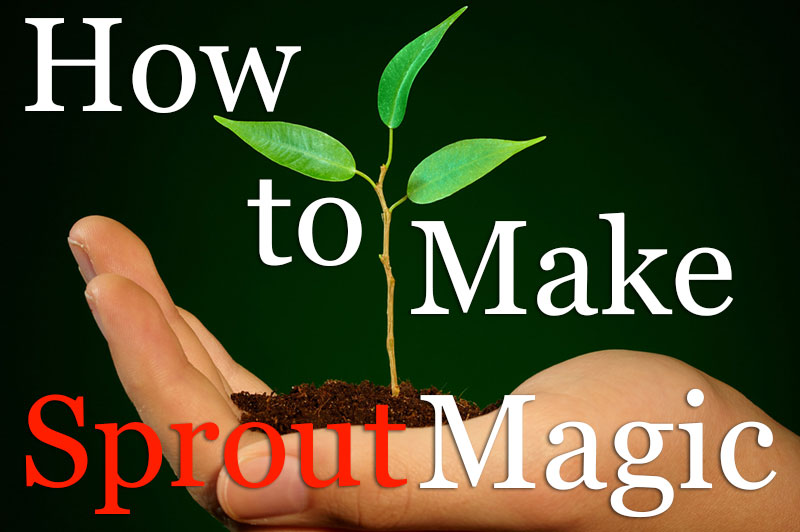Make them the base for salads, add them at the last minute to homemade soups, even carry them around with you in a bag and eat them instead of chocolate bars and biscuits. They are sweet and delicious and won’t leave you with an energy slump.
An excellent way to cram your meals with goodness is to sprout your own seeds (sometimes called bean sprouts). Seeds and grains are latent powerhouses of nutritional goodness and life energy: Add water to germinate them, let them grow for a few days in your kitchen and you will harvest delicious, inexpensive fresh foods of quite phenomenal health-enhancing value. The vitamin content of seeds increases dramatically when they germinate. The vitamin C content in soya beans multiplies five times within three days of germination - a mere tablespoon of soybean sprouts contains half the recommended daily adult requirements of this vitamin. The vitamin B2 in an oat grain rises by 1300 percent almost as soon as the seed sprouts, and by the time tiny leaves have formed it has risen by 2000 percent. Some sprouted seeds and grains are believed to have anticancer properties, which is why they form an important part of the natural methods of treating the disease. Another attractive thing about sprouts is their price. The basic seeds and grains are cheap and readily available in supermarkets and health food stores - chickpeas, brown lentils, mung beans, wheat grains and so forth. And since you sprout them yourself with nothing but clean water, they become an easily accessible source of organically grown fresh vegetables, even for city dwellers.
DIY Sprouting
When you discover how economical and easy it is to grow sprouts you will want to have some on the go all the time. Once germinated, you can keep sprouts in polythene bags in the fridge for up to a week - just long enough to get a new batch ready for eating. Most people grow sprouts in glass jars covered with nylon mesh held in place with an elastic band around the neck, but I have discovered an even simpler method which allows you to grow many more, and avoids the jar method problem of seeds rotting due to insufficient drainage.
You will need the following:
seeds (e.g. mung beans)
seed trays with drainage holes, available from gardening shops and nurseries
a jar or bowl to soak seeds in overnight
a plant atomizer - from gardening or hardware shops
a sieve
nylon mesh - available from gardening shops.
- Place two handfuls of seed or beans in the bottom of a jar or bowl and cover with plenty of water. Leave to soak overnight.
- Pour the seeds into a sieve and rinse well with water. Be sure to remove any dead or broken seeds or pieces of debris.
- Line a seedling tray with nylon mesh (this helps the seeds drain better) and pour in the soaked seeds.
- Place in a warm dark spot for fast growth.
- Spray the seeds twice a day with fresh water in an atomizer and stir them gently with your hand in order to aerate them.
- After about three days place the seeds in sunlight for several hours to develop the chlorophyll (green) in them.
- Rinse in a sieve, drain well and put in a polythene bag in the fridge to use in salads, wok-fries etc.
There are many different seeds you can sprout - each with its own particular flavor and texture. Have fun discovering which ones you like best.
